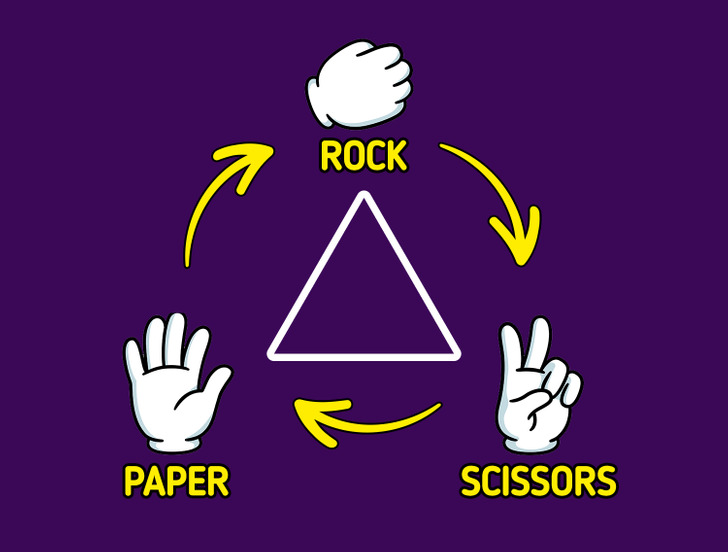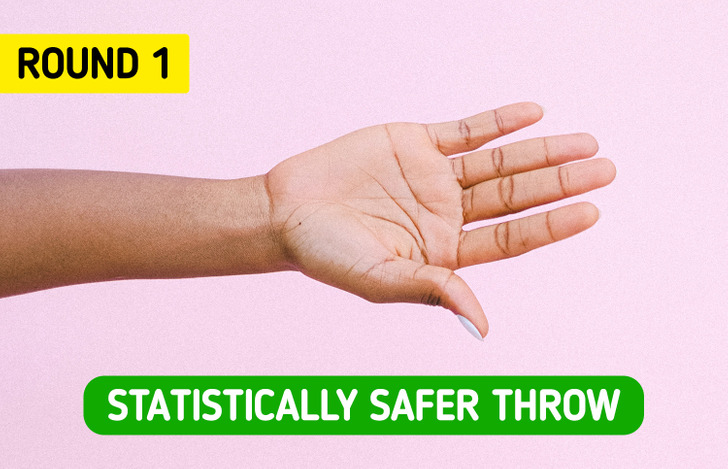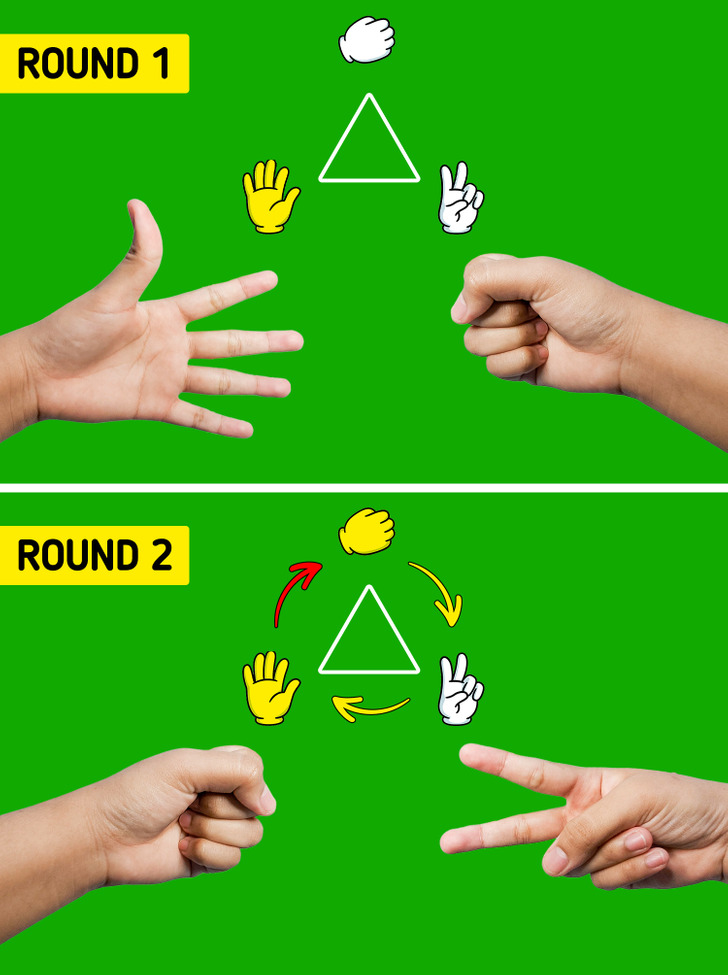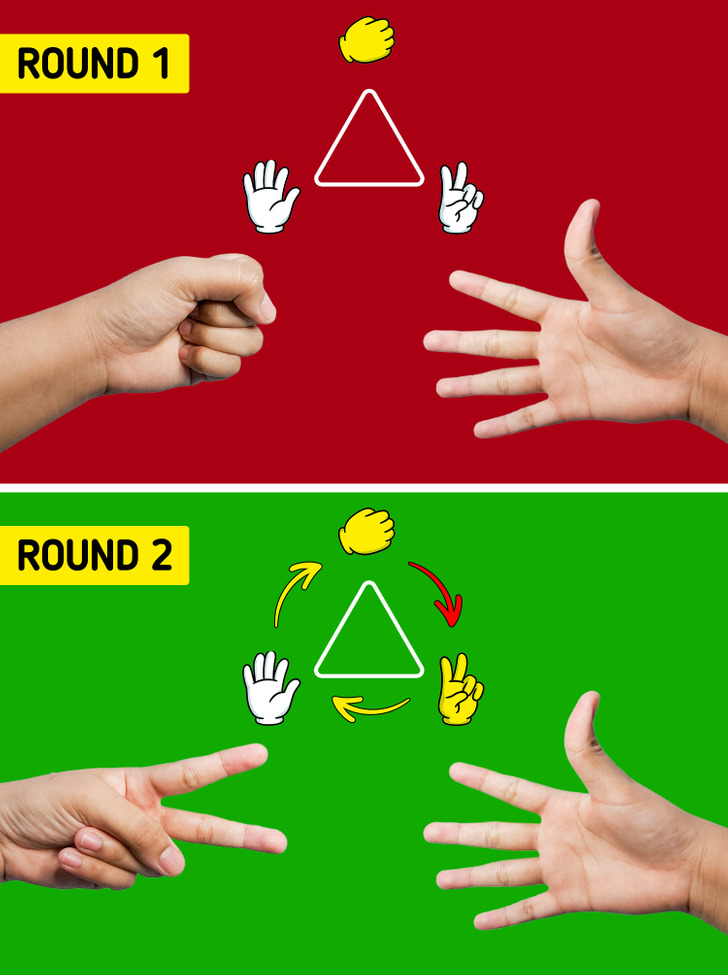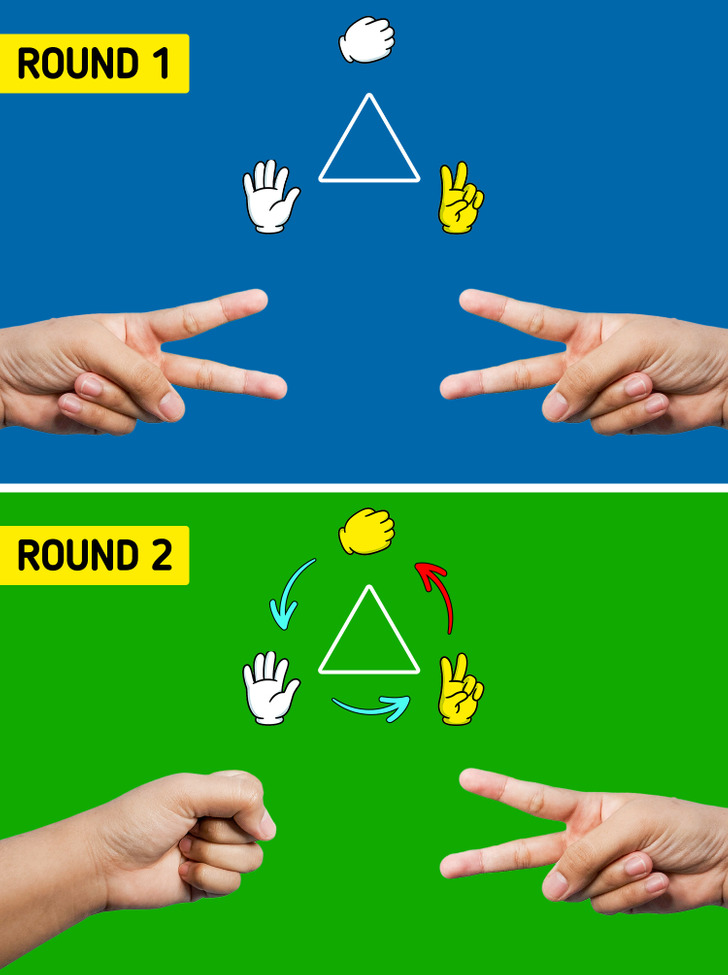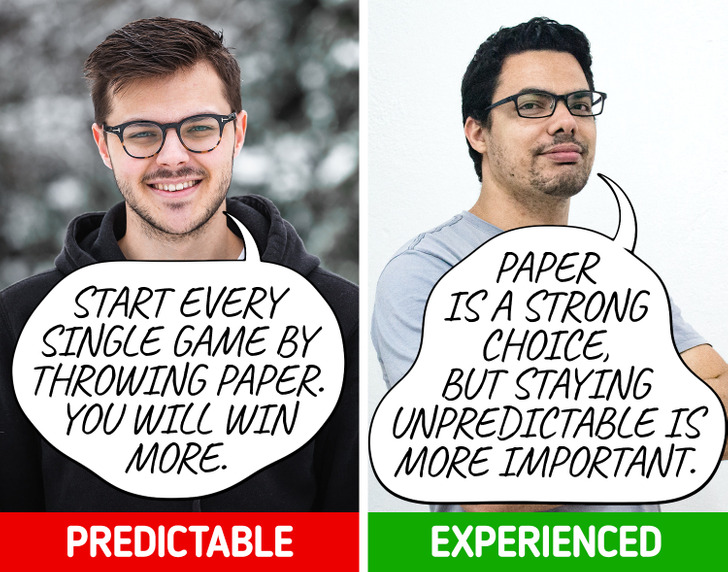6 Tips to Win at Rock Paper Scissors Every Time Without Cheating
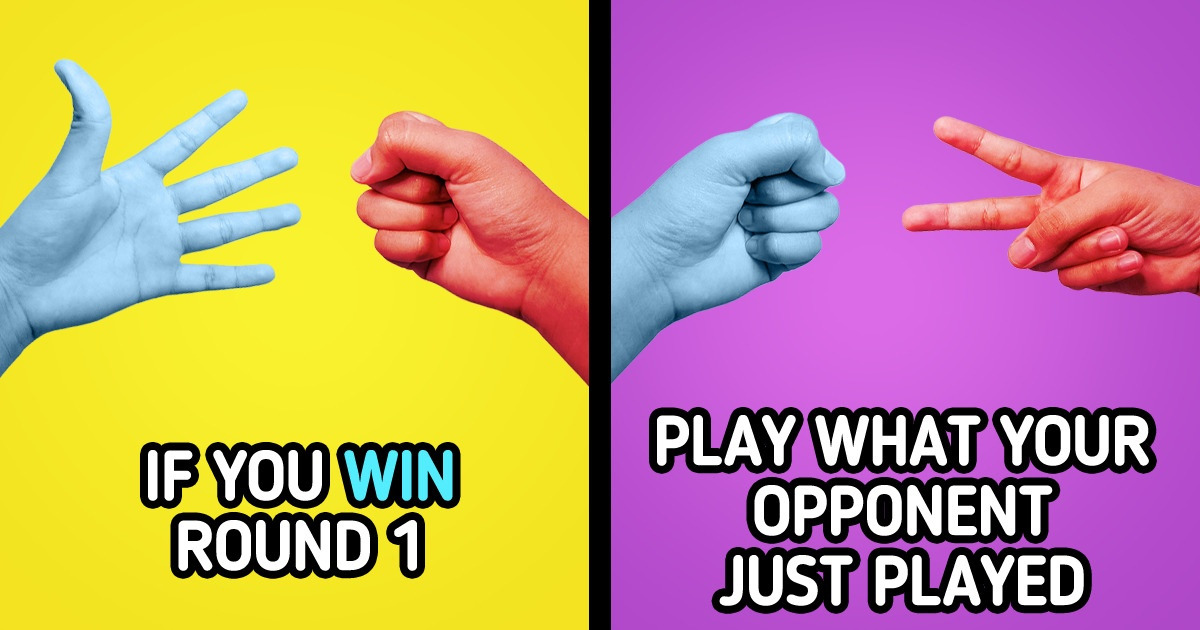
Rock Paper Scissors is a game that is widely played around the world, either for entertainment or to settle everyday disputes. Its rules indicate that, theoretically, any of the 3 throws will win one-third of the time, but actually playing Rock Paper Scissors can be a bit more complicated.
5-Minute Crafts has prepared a guide outlining strategies you can use as a way to predict what your opponent is going to play, increasing your chances of winning your future Rock Paper Scissors matches.
Understanding the Rock Paper Scissors cycle
As a way to simplify the explanations of the strategies, it’s beneficial to visually establish the cycle where the 3 possible throws interact with each other. Guiding ourselves by the rules of the game, we can understand the cycle as rock beats scissors, scissors beat paper, and paper beats rock.
This can be neatly illustrated in a pyramid, where each corner represents each of the 3 possible throws—rock, paper, or scissors. By following the direction of the arrows, it will be possible to easily identify the throw that will win in any given situation.
1. Consider starting with paper as your first throw.
Although an optional strategy, there are statistics that support the idea of picking paper as your first throw. The World Rock Paper Scissors Society has reported that, in tournament play, rock is the most popular throw with a rate of appearance of 35.4%, whereas scissors are the least popular, with a 29.6% rate. A study conducted in 2016 also supports the preponderance of rock as a throw. All of this points to the fact that paper is a sensible first move.
However, this is a double-edged sword. An experienced player may be aware of this, meaning that they are likely to lead with something that isn’t rock. In a case like this, it’s better to choose scissors as your first throw, as you’ll either win against paper or tie with their scissors.
2. If you win the previous round, play what your opponent just played.
A way to become better at winning Rock Paper Scissors is by exploiting your opponent’s conditional response. A Chinese study, conducted in 2014, reports that players who lose a round are likely to change their throw in the next round, particularly to the throw that would have beaten the throw you just played. This means that if you win a round, a good strategy is to play the same throw your opponent used in the previous round.
If you throw paper in the first round and beat your opponent’s rock, it’s likely that your opponent’s conditional response will be to throw scissors in the next round, since that is the throw that would beat the paper from the first round. Counteract this by playing rock in the next round. In other words, if you win a round, move forward in the Rock Paper Scissors cycle.
3. If you lose the previous round, play whichever throw was not played.
The same study shows that players who win will often feel confident about playing the same throw 2 times in a row. What this means is that if you have just lost a round, you have a better chance of winning the next one if you play whichever throw was not used in the previous round.
If you used rock as your first throw and your opponent went with paper, it’s likely that they will go for paper in the next round as well. If you throw the move that wasn’t played in the previous round, scissors, you have a higher chance of beating their hand. Just like when you win a round, if you lose, move forward in the cycle.
4. If you tie the previous round, play whatever would have beat that throw.
Finally, the study showed that, in the context of a tie, rock paper scissors players also tend to repeat the same throw as the previous round. If you tie in a round, simply play whichever throw would beat the throw used in the previous round.
If both you and your opponent tie with scissors, there is a higher chance that they will go with scissors once again. To counteract this play, it’s recommended for you to move backward in the cycle, meaning that you should go with rock in the next round.
5. Be better at being random.
Mathematically speaking, the game should be played at random, but real people tend to behave in ways that are predictable and can be exploited. This applies to you just as much as it applies to your opponent.
This is why it’s important to not stick too strictly to the same strategy, as doing so gives your opponent a better chance at predicting your moves. Avoid starting with the same throw all the time, as that will become an easy play to counteract. It’s recommended that you switch up your plays a bit. For example, decide in advance to throw a certain string of throws—such as rock, rock, scissors—independent of the result. This will break any habits and predictable patterns.
6. Tips for how to read and study your opponent
Predicting your opponent’s decision-making process is the key to victory in Rock Paper Scissors. More experienced players pay close attention to their opponent and keep track of their throws. Here are some tips that will help you with that:
- Some inexperienced players will avoid repeating the same throw twice in a row. Take advantage of this by predicting that your opponent will rarely use the same throw they used the previous round.
- It will be even less likely that your opponent will play the same move 3 times in a row. If they play paper twice, they’re most likely going to go with either scissors or rock next, making rock the safest move.
- Look for any tells or indications about your opponent’s next move, such as their elbow swinging out before they throw paper.
- See if your opponent favors or has a tendency toward throwing the same move, and counteract accordingly.
- Alternatively, remember your opponent’s first throw, as some experts think there’s a high chance that players may go back to using it.
